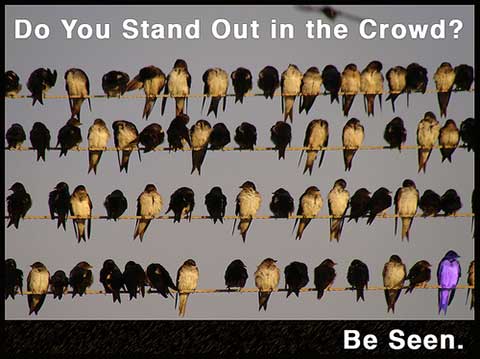The 5 Top Small Business SEO Secrets
By: Chris Bachman | January 29, 2014 | Print
For many a small business the magic of getting their business onto Page 1 of the search engine where the traffic is can seem like just that: magic. They either need to spend hours each day reading, studying and implementing the latest SEO edicts coming down the pipeline, or hire an SEO person (who can often turn out to be a pirate instead), or forego the whole thing and spend oodles of money on PPC.
It doesn’t have to be that way. As a small business owner myself I understand all the factors that go into running a business as well as the work that needs to be done with regards to marketing. This perspective allows me the unique opportunity of interpreting the sea of SEO information into a digestible summary for Joe Businessman. My goal here is to take everything that we learned during the past year and boil it down to five simple steps that any business owner can understand and take action on.
Mobile Friendly
Think your old site is mobile friendly? Think again.
Up to 80% of searches are being made on mobile devices such as smart phones and tablets. This number varies greatly depending on the type of business and potential client base, but suffice it to say that if your website isn’t appearing in beautiful fashion and within seconds of being clicked on, that prospect is gone….
Understand that websites that are larger than a mobile screen’s width will often be minimized so as to show the entire site in the screen. This can create an effect similar to looking through the wrong end of a telescope. Not good. Your old site may well have oversized images and graphics on it which are slow to load or don’t load at all, leaving a huge hole in the user experience. Still running flash on your site? Tsk, tsk. You clearly haven’t looked at your own site on a smart phone lately.

Your options to fix all this are pretty straight forward.
Totally convert to a "mobi" website. "mobi" sites are very stripped down websites. This is not my recommended course of action as the site built strictly for mobile is typically a stripped down version of what you want to share and can leave a less than ideal impression with the user. Cost $
Convert to a tablet friendly design. This is a good step in the right direction and moves your content into a framework that will fit a lot of tablets without creating a scrolling issue. A good tablet friendly design may also have some responsive design attributes to it and should show much better on a smart phone than a standard full screen website does. Cost $$
Combining a tablet design with a separate mobile site a user can access if they wish. This option provides the best of both worlds. It allows you to retain some of the quality and larger aspects of a full scale website while providing a stripped down version for your smart phone user should they want it. Cost $$$
Responsive design. This is the Holy Grail that can be a great answer if you have the budget for it. What this does is create a website that is super fluid and changes shape to fit whatever device it is being viewed on. Very nice. Understand, though, that there are scale requirements inherent with this that precludes the inclusion of certain design elements you might desire in a larger format. This is simply because one must design to satisfy the smallest format requested; a smart phone. So even here there is some sacrifice. Cost $$$$
The word from Google? They don’t expect everyone to have a totally mobile version of their website. They just want to make sure that whatever version you put up for people is one that will be widely and easily accessible to all. They will reward and penalize accordingly.

Content
Skimpy pages, multiple topics crammed onto a page, thin copy, content mill copy…all this is a BIG no-no with Google now, and other engines as well. The word from on high is that websites with lots of high quality, useful content will rank higher than those that don’t have it. This is nothing new. Good SEO’s have known this for years. The change now is that the search engines are actually making good on their threats to clean up the SERPs (search engine result page) and have begun filtering sites by content.
If you have been coasting along thinking that you can be king-of-the-hill with a dozen pages of poor quality content, you are likely in for a rude awakening very soon. If your web person has been bugging you to provide more content you should really start to listen to them and empower them to save your butt. The way I present it to my clients is that this is a wonderful opportunity to slingshot ahead of the competition by putting together a plan to add top quality content to their site now before the competition does.
How do you begin to find new content? Do some keyword research with Google’s Keyword Planner tool or some other program. Think about casting a larger net and reaching more people who may be on the fringes of your core business. Maybe you own a ski rental shop and your content has always been focused on one set of keywords, ski rentals. What if you expanded your realm of influence and offered tips on getting fitted for your first skis? How about articles about the local ski areas? Maybe a tip sheet to help newbies decide if they should take up skiing versus snowboarding? How about the best après ski spots for pizza and brewskies? Maybe a tip sheet about what to expect when first getting into the sport and how to handle it; i.e., getting on lifts, keeping fingers warm, proper dress, hydration, rules of behavior, etc.
Think bigger. Where are your clients when they aren’t precisely looking for ski rentals? They really do other things. If you can figure those out and help them with that or place yourself in their view…you win. You are now providing helpful, useful, informative content that shows you are a serious player in your arena. The public likes it, the search engines like it…your analytics will reflect an increase in several important areas…everybody wins. Or, you can keep going like you have been and wait until it is too late to take effective action.

Local Directories
You must get your business listed in the appropriate local directories. People are finding these, using them, and giving their cash to the businesses found there. I’ll give you an example of how effective this can be.
I have a client for whom we built a new site. Even though we had done everything right in building it, his was a new website compared to his competitors and so was ranking lower than the others. I suggested we get him in a dozen local directories and he agreed. Within a month he was showing up on page one for several terms, had appeared in other terms he hadn’t ranked at all for before and in two cases had gained positions for 40% of the spots on the first two pages in Google! Controlling 40% of the SERPs is amazing! And we did it for him with directories.
A couple things to keep in mind as you contemplate fleshing out your directory presence: 1) in any given market there are probably only ten to twelve directories that are going to be the producers for your business. Identifying them is important; otherwise you can waste a lot of time; 2) setting them up properly and thoroughly takes time and planning. If you don’t have the time or patience (figure 10-20 hours for 10 listings), don’t start because it will just create a mess you have to pay someone else to clean up later on; and 3) you can certainly hire a firm to do the work for you.
The cost for this service is running from $399 to $999 and the quality varies a great deal. They will promise to list you on 30, 40, 50, 60+ directories, but remember; only 10 typically matter. They will also make mistakes with your listing. We tested a big one, Yext, for almost a year and found numerous mistakes including the wrong address, wrong phone number, not categorized properly, not categorized at all, missing information, etc. While Yext offers a decent service for basic management, it is an imperfect system at best and you still need to double check everything, so the advantage of using the service is somewhat watered down.
Smaller firms will sometimes offer this service for their clients but do be sure to ask if they have actually done this before hiring them for your business. You don’t want to be the one they practice with.

Links
Way back in the early days of SEO, say Year 2000, it became apparent that links pointing to your website from other websites was a good thing, at least to Google. The more links you had the more “votes” you had and the higher your site ranked. And with that realization…the game was on.
Google still uses inbound links as a gauge of website worthiness; make no mistake about that. However, after years of abuse by everyone from nefarious SEO practitioners to mom and pops trying to compete, the great GOOG finally said “enough!” in 2013 and began an aggressive campaign of weeding out sites with bad links pointing to them. They even went so far as to make websites responsible for the types of links pointing to them, something never done before. You should have seen the SEOs scramble, like rats when the lights come on. OK, not all SEOs, just the weasely ones. The rest of us pretty much saw the writing on the wall a long time ago and avoided things like link farms, article bases, “10,000 links for $100” and the like.
Links today are graded on cleanliness, source, authority, history of abuse and then if they are falling into unnatural patterns. Got good links? Great, your ranking is going up. Got bad links? Hmmm, it was nice knowing you.
There are numerous ways to develop links, and a handful of good firms helping companies build quality links. For a lot of small businesses the process of link building is similar to taking time out to drive to another state to buy a lotto ticket. It is a lot of effort in an already crowded day and the results are hard to imagine much less view as tangible. Hiring the process out to a big firm can be very expensive; we’re talking thousands of dollars per month. Hiring out to a small firm is easier for most but you still have to have money to throw at something that can’t be easily tied to a specific result. You really have to trust the process in the end.
Doing it yourself is certainly achievable if you have the time to devote to it. It takes some research, some strategizing, some legwork and a bunch of phone calls and emails. That’s just for starters.
Strategy #1: Find groups you can affiliate with easily such as Chamber of Commerce, business associations, non-profit groups etc. These are all places that will usually offer some way for you to have a link back to your website. These links may or may not be useful depending on certain factors, but that is for another article. Just know that if you get a bunch of these some of them will help boost your rankings.
Strategy #2: Develop great content. If you add useful, helpful, informative content to your website you are giving other sites something to link to…something they may feel is of benefit to their audience and they may just want to share it with them. Always have Social Share bars or buttons adjacent to your content so that viewers may easily share it with others. One of my favorite types of content happens to be Top 10 lists. These are easily created by business owners, creation being the first hurdle, and readily consumed by the Internet audience. With a little thought you should be able to put together several Top 10 lists that would appeal to your target audience. Then let everybody know about them. Once they visit your site and read them some will link to it. It is just that easy.
Strategy #3: Promote your super useful, helpful, informative content by mentioning it in social media areas like Facebook, Twitter, LinkedIn, Google+ and more. Imagine that each piece of content you create comes with a little bag of magic seeds. If you sprinkle the seeds around on fertile ground some will take hold and sprout into links pointing back to the content. If you don’t sprinkle the seeds around…doesn’t matter how great your content is, it probably won’t get noticed, much less linked to.
Citations
Citations are like links without the links. Huh?! It is really simple. Citations are simply mentions of your business somewhere out on the web. The more your business is talked about the more popular it is assumed to be and the higher up it will rank in the SERPs. How do you get mentions beyond the obvious hustling of family and friends? Get in the news somehow. Donate something. Sponsor something – doesn’t have to be a lot of money – have your business participate in something….you get the idea. Make some noise, plant some seeds.

Chris Bachman is a business consultant and Project Director at ProClassWebDesign.com as well as a self confessed serial entrepreneur. He is a regular writer on topics pertaining to marketing, SEO, and business websites as well as an instructor and independent consultant. Learn more about Chris Bachman on Google+ or LinkedIn.
Call NOW !
Park City: (435) 631 . 2595 | Salt Lake City: (801) 214 . 8824